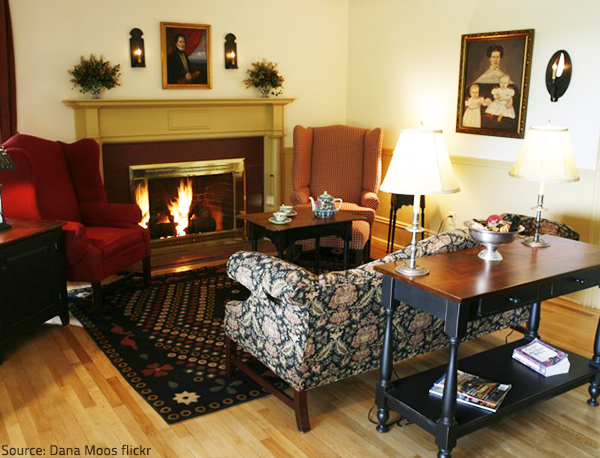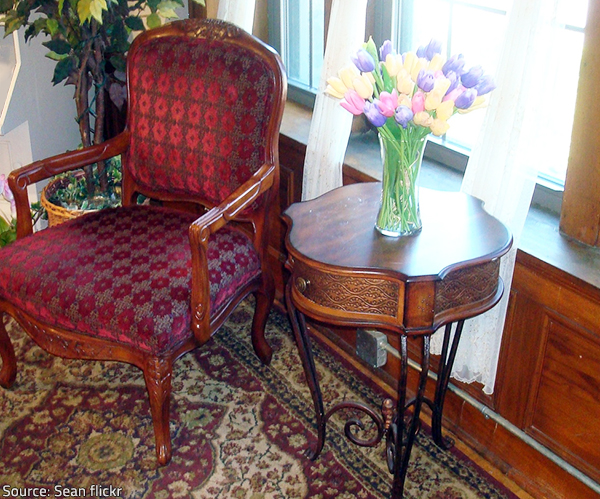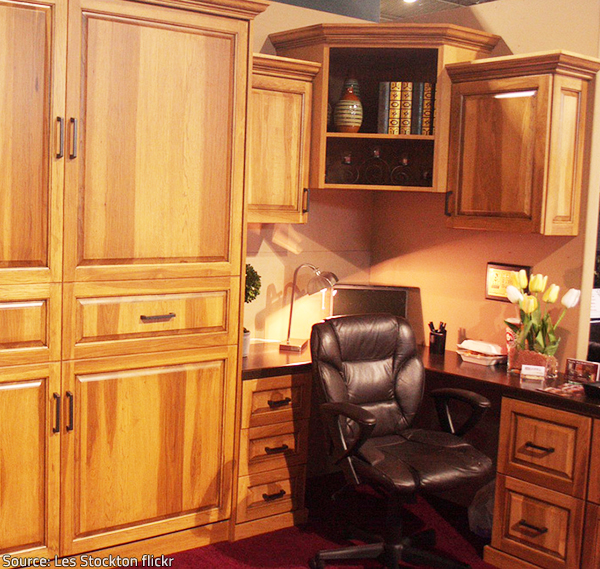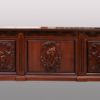
Nothing compares to the comfort and coziness of your well-furnished home.
What is the first thing that comes to mind when thinking about a cozy and comfortable home? A large fireplace, a refreshing bathtub, a sunlit veranda? All these delightful features bring a sense of warmth and comfort to a home, of course, but the very first images to pop into your head will most likely be a soft bed and a cushy sofa (closely followed by a set of armchairs around an elegant coffee table or a solid wood dining table that can sit your entire family, etc.). As it is your comfortable furniture that provides you with the relaxation and practicality you need in your home. You can’t do without it and you’ve certainly put a lot of effort into finding the pieces that best suit your interior design, your practical needs, and your aesthetic taste. It’s only logical then, that you will want to keep them for as long as possible.
Quality furniture is a valuable investment that can withstand the test of time and become a treasured family heirloom. To remain in excellent condition after many years of daily use, however, it needs to be well protected and properly cared for. Fortunately, this is easy enough – all you need to do is follow the efficient furniture care tips below and you’ll be able to keep your cherished furniture pieces clean and beautiful for many years to come.
How to Care for Wood Furniture
Fine wood furniture is not only beautiful and functional, but also extremely durable. If you know how to properly protect the delicate finish, your lovely wood pieces will last for decades without losing their great aesthetic appeal and high practical value.
The Do’s of Effective Wood Furniture Care
1) Avoid heat and light as they may cause the finish to fade and the wood to dry out and shrink or crack:
- Place wood furniture in areas that don’t get direct sunlight;
- Use drapes or protective window films to prevent UV light from entering the room;
- Keep wood furniture away from fireplaces, radiators, and other sources of heat, including ovens, air conditioners, and heating vents;
- Use trivets or hot pads under hot pans and dishes to protect the furniture surface;
- Maintain an indoor humidity level of about 45-50 percent to prevent the wood from drying out and splitting.
2) Prevent scratches, dents, stains, and other damage:
- Use felt or cork coasters under bowls, cups, mugs, glasses, vases, lamps, framed photos, and any other items you set on your wood furniture (make sure you don’t use plastic or rubber pads as they may soften and damage the finish);

How many wood furniture care mistakes can you spot in the picture?
* An exquisite piece placed in direct sunlight; * No coaster under the vase; Anything else? - Place padded covers or linen or cotton tablecloths on your dining room table to protect the wood from spills and stains;
- Use a protective pad when writing with a ballpoint pen or permanent marker (as well as when drawing with watercolors, aquarelle pencils, pastels, etc.) on a wood desk or table.
3) Clean properly:
- Blot spills immediately;
- Dust wood furniture on a regular basis. Use a slightly damp cotton cloth or a microfiber cloth to remove dust particles and fine soil from the wood surface;
- Use a lint-free cloth dampened in a solution of oil soap and water to remove grease and grime from the wood surface. Rinse with a cloth wrung out in clear water and dry the furniture with a soft towel;
- Follow the direction of the grain when cleaning wood pieces.
4) Polish wood furniture three times a year:
- Make sure the furniture is clean and dry before applying wax or polish;
- Use an appropriate type of wood furniture polish or wax (depending on the type of finish on your furniture) and strictly follow the user instructions;
- Wipe off extra polish before it dries to avoid excessive build-up;
- Remove the metal pulls, knobs and other hardware parts from your furniture when polishing them, because the harsh chemicals in the metal polish may damage the wood. Be careful not to scratch the furniture surface when putting the metal pieces back in place.
5) Consider professional refinishing
If a wood furniture piece is badly stained, too worn out, or in poor condition, your best bet is to have it professionally refinished. The experts will have the specialized cleaning products and technical know-how to take the best possible care of your cherished furniture and restore it to its original condition in a safe and efficient manner. All you need to do is contact several reputable furniture refinishers in your area, get free estimates, compare the offers, and choose the professionals who offer the highest quality services at the most reasonable prices.
Don’ts of Wood Furniture Care
- Don’t use a feather duster to dust your wood furniture as the spines of the feathers can scratch the fine wood finish;
- Don’t use sponges to clean your wood furniture as they are too abrasive and may damage the delicate wood surface;

Provided that you take good care of it, your fine wood furniture will bring comfort and natural charm to your home for many years to come.
- Don’t use water-based cleaning products as excessive moisture can damage the finish and cause the wood to warp;
- Don’t use ammonia or any other harsh cleaning agents that can break down the wood finish;
- Don’t spray furniture directly, as the spray can leave behind a sticky residue that will easily accumulate dust and dirt;
- Don’t combine furniture polish with wax (this will result in a gummy build-up on the surface and will not only dull the appearance of your wood furniture, but will also attract dirt, dust, and smoke particles);
- Don’t put hard or sharp-edged objects directly onto wood furniture as they can easily scratch the surface;
- Don’t drag dishes, glasses, vases, or other items across a wood surface.
How To Care For Leather Furniture
Leather has a luxurious look and feel and timeless beauty – aging brings out its natural patina and makes it more and more charming with each passing year. So, provided that you know how to take proper care of it, you’ll be able to enjoy your leather furniture for a really long time.
The Do’s of Effective Leather Furniture Care
1) Take efficient precautionary measures to protect your leather furniture from damage:
- Apply an adequate leather conditioner every 6 months;
- Keep leather furniture away from direct sunlight and heat sources because the delicate leather can fade or crack when exposed to strong light or intense heat;
- Flip and rotate cushions to distribute wear more evenly;
- Use furniture covers when young kids and/or pets are sitting or playing on your leather furniture;
- Cover your leather furniture with plastic wrap or old sheets if you are not going to use it for a prolonged period of time.
2) Clean your leather furniture safely:
- Vacuum regularly to remove dirt and debris from your leather furniture. Always vacuum on low speed and make sure you use the soft brush attachment as the plastic attachments can easily scratch the delicate leather;
- Dust your leather furniture pieces frequently and wipe them with a dry clean cloth on a weekly basis;
- Remove spills immediately;
- Clean your leather furniture with a soft cloth, dipped in soapy water. Make sure you wring out the cloth well because you can damage the leather if you soak it heavily with water;
- Use a specially designed leather cleaning product (preferably one that contains natural beeswax as it will not only clean but also nourish the leather) to clean heavily soiled leather furniture.

Leather furniture has a luxurious look and feel that greatly increases the comfort and value of your home.
Don’t forget to spot-test the product on an inconspicuous area of the furniture first to make sure that it won’t cause discoloration or any other damage to the delicate leather surface;
- Rinse with a clean cloth moistened with clear water, then use a dry cloth to wipe away as much of the water as possible (don’t rub, just blot the moisture). Let the furniture air dry completely;
- After cleaning your leather furniture, buff the surface to restore its shine.
3) Consider professional cleaning
If you’re dealing with stubborn stains or if you’re not sure what cleaning products are safe to use on your expensive leather furniture, you’d better call for professional assistance. Using professional upholstery cleaning services will save you a lot of time and effort and will ensure the long life and excellent condition of your luxurious leather furniture.
Don’ts of Leather Furniture Care
- Don’t use cleaning solvents, oils, furniture polish, or any products containing silicone, petroleum, or artificial waxes on leather furniture;
- Don’t use alkaline cleaners on leather as they may cause discoloration;
- Don’t use bleach and other ammonia-based cleaners or strong detergents because they are too harsh and can easily strip the natural oil of the leather causing it to dry out and crack;
- Don’t rub hard when cleaning your leather furniture as you may push the dirt deeper or even rub through the leather;
- Don’t put any sharp objects (such as scissors, knives, keys, rings, etc.) on leather furniture as they can scratch the delicate surface;
- Don’t leave felt tip pens, permanent markers, craft supplies, nail polishes or other similar materials on leather furniture as they can bleed onto the upholstery and stain the surface.
Furniture care is not too much of a challenge – all you need to do is take some efficient precautionary measures to protect your cherished pieces from accidental damage and excessive dirt. Then, you’ll be able to enjoy the comfort and beauty of your fine furniture for many years of comfort and delight.












